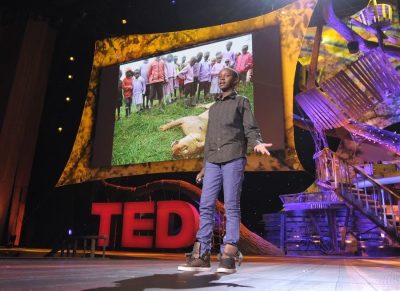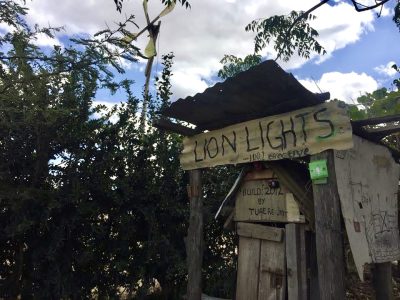ST. GEORGE —When a female writer was inspired by one boy’s true story of perseverance, she couldn’t pass up the opportunity to turn that story into a published book, encouraging children that anything is possible and to never give up on something they believe in.

Shelly Pollock, a children’s nonfiction published author, said she began writing while she and her husband traveled in their RV for 14 years. While they traveled, she even wrote an article about human towers in Spain, which landed her an international award in the Society of Children’s Book Writers and Illustrator’s annual magazine.
“I chose children’s books and articles because I was a special ed teacher,” she said. “I did a lot of work with students with learning disabilities of all ages and I’ve always loved picture books.”
Her debut children’s book, “Lion Lights,” is currently available for pre-order on Amazon, and is set to hit the shelves on Tuesday, with a children’s event and book signing that will take place Saturday. The event will include a book reading and signing along with lion face painting, a Maasai necklace arts and crafts activity, cornhole, a “watering hole” and lion cookies, along with a free pin, bookmark and pen.
“So many people write bedtime stories. I have a tendency to write things that are different,” Pollock said.

Pollock said the story behind “Lion Lights” was inspired by a TED Talk she watched six years ago. A small Maasi child from Keyna entered the stage and told the audience his unique story in broken English. Although the story he told only lasted about six minutes, she was instantly captivated by it and his message stuck with her.
“I just had to write this story down, mainly for children to be inspired by this,” Pollock said. “That whole audience at the TED Talk were adults, but I knew that kids need to hear it.”
Pollock explained that when the boy, Richard Turere, was only 6 years old, he, along with the other Maasi boys were responsible for tending to the family’s sheep and goats. When he turned 9, he then watched the family’s cows – a huge honor since the cows represented the family’s entire wealth and well-being.

With a task to take the cows out to pasture and bring them in at night, the family farm was located in an unfortunate location – the southside of the Nairobi National Park, which Pollock said is fenced on every side but the south. When animals such as zebras and wildebeest would migrate, it put their path right past the family’s cows, which brought lions into their Boma, or corral, in search of food.
“As I say in my book, the cows are a lot easier to grab than a zippy zebra,” Pollock said.
Turere’s family and neighbors began to lose their cows to the lions, which threatened their livelihood. In retaliation, the Maasi killed the lions, which drastically took down the population. Not only did they lose money from cow deaths, but the decrease in the lion population also slowed down tourism, which was vital money the community relied on.

He tried many things to stop the massacre of his family’s livestock, like building bonfires, scarecrows and Acacia fences, but the lions always found a way around it. At the same time, the conservationists also tried different methods such as guard dogs and fence posts, but these options were too expensive and impractical for local farmers.
While Turere wasn’t afforded much in the area of education, Pollock said he had a large interest in electronics and would take apart the family’s radio and television sets just to see how they worked. One night, while he patrolled the Boma with a flashlight, he realized the lions didn’t approach the cows. When he saw a pattern of light movement deterring the lions, he decided to figure out a way to re-create the light without a human being present.
With his electronic knowledge and his family’s welfare on the line, Turere began to create his own unique invention. Pollock said he used items from the junkyard such as an old car battery and a motorcycle turn signal, which created a flash. While he experienced many failures, he never gave up. Through trial and error, he thought he finally figured it out and tried his invention for the first time.

“His heart was beating as he flipped that switch. And the first light flashed and then the next one and the next one and pretty soon, the whole Boma had lights flashing around because he had wired everything around it,” Pollock said.
To the shock of his neighbors and even his own family, the lions did not return to the Boma and everyone around him wanted to adopt the same invention in their fields. Pollock said no place in the world, including Africa, had ever used or heard of this method.
His invention caught the attention of some important people, including Dr. Paula Kahumbu with WildlifeDirect. Turere’s invention now is being used around the world to protect all sorts of animals in different environments. Due to his creative and unique invention, Turere was given a full scholarship to the top boarding school in Kenya, Pollock said.
Turere, now 22 years old, just graduated from a leadership university in Rwanda and is caring for his family’s farm during the extreme drought the area is experiencing.
Pollock said she did extensive research prior to writing the story, including working with Kahumbu in Nairobi. Kahumbu gave Pollock the green light on the accuracy and content, then sent the transcript directly to Turere, who was a junior in high school at the time. To her surprise, he really liked it and also gave his stamp of approval.
For a year and a half, Pollock sent her written transcript out to various publishing companies. Much like Turere, she got what felt like failure after failure, but she didn’t give up.
“Some people may not know this, but it’s extremely hard to get published. I had almost a hundred rejections between agents and editors – a hundred,” Pollock said.
Pollock sent a hard copy of her book to Tilbury Publishers House and received an email from them a few weeks later. A few days after responding, the publishing house officially approved the book for publishing. Between contracts, international communications and the difficult task of finding an illustrator, Pollock said it took two full years to get the book where it is now from the date of the original approval.

“My only goal – I don’t care much for myself – is really to inspire children. The story is so beautiful for kids nowadays. I couldn’t pass it up. I couldn’t let it go,” Pollock said.
As for future plans, she said she hopes to attend conferences and festivals to promote her book and enjoy the fruits of her labors.
“My whole theme is that kids can do amazing things,” Pollock said.
For more information on Pollock, visit her website or find her on Instagram and Facebook.
Event details
- What: “Lion Lights” book launch
- When: Saturday, Aug. 6, at 10:30 a.m.
- Where: The Book Bungalow, 94 West Tabernacle Street, St. George
- Admission: Free general admission tickets are limited, Bundled tickets are $25 and include parties up to three and one book
- Get tickets here
Photo Gallery

A headshot of Author Shelly Pollock is shown, location and date unspecified | Photo courtesy of Shelly Pollock by KC Knoop Photography, St. George News

Young Inventor Richard Turere is shown, location and date unspecified | Photo courtesy of Shelly Pollock, St. George News

Young Inventor Richard Turere is shown, location and date unspecified | Photo courtesy of Shelly Pollock, St. George News

Young Inventor Richard Turere is shown protecting his family’s livestock, location and date unspecified | Photo courtesy of Shelly Pollock, St. George News

A present photo of Inventor Richard Turere is shown, location and date unspecified | Photo courtesy of Shelly Pollock, St. George News

I graphic for Inventor Richard Turere is shown | Photo courtesy of Shelly Pollock, St. George News

Inventor Richard Turere is featured on stage for a TED Talk, location and date unspecified | Photo courtesy of Shelly Pollock, St. George News

A homemade sign for Lion Lights is shown, Kenya, date unspecified | Photo courtesy of Shelly Pollock, St. George News

An article Shelly Pollock wrote is featured in a magazine, July 18, 2022, St. George, Utah | Photo by Jessi Bang, St. George News

A headshot of Author Shelly Pollock is shown, location and date unspecified | Photo courtesy of Shelly Pollock by KC Knoop Photography, St. George News

Shelly Pollock enjoys time in nature, location and date unspecified | Photo courtesy of Shelly Pollock by KC Knoop Photography, St. George News

Author Shelly Pollock next to her book, “Lion Lights,” St. George, Utah, July 18, 2022 | Photo by Jessi Bang, St. George News

Author Shelly Pollock stands outside her home, St. George, Utah, July 18, 2022 | Photo by Jessi Bang, St. George News

A present photo of Inventor Richard Turere is shown, location and date unspecified | Photo courtesy of Shelly Pollock, St. George News

The book cover of “Lion Lights” is shown | Photo courtesy of Shelly Pollock, St. George News
Copyright St. George News, SaintGeorgeUtah.com LLC, 2022, all rights reserved.




















Discussion about this post